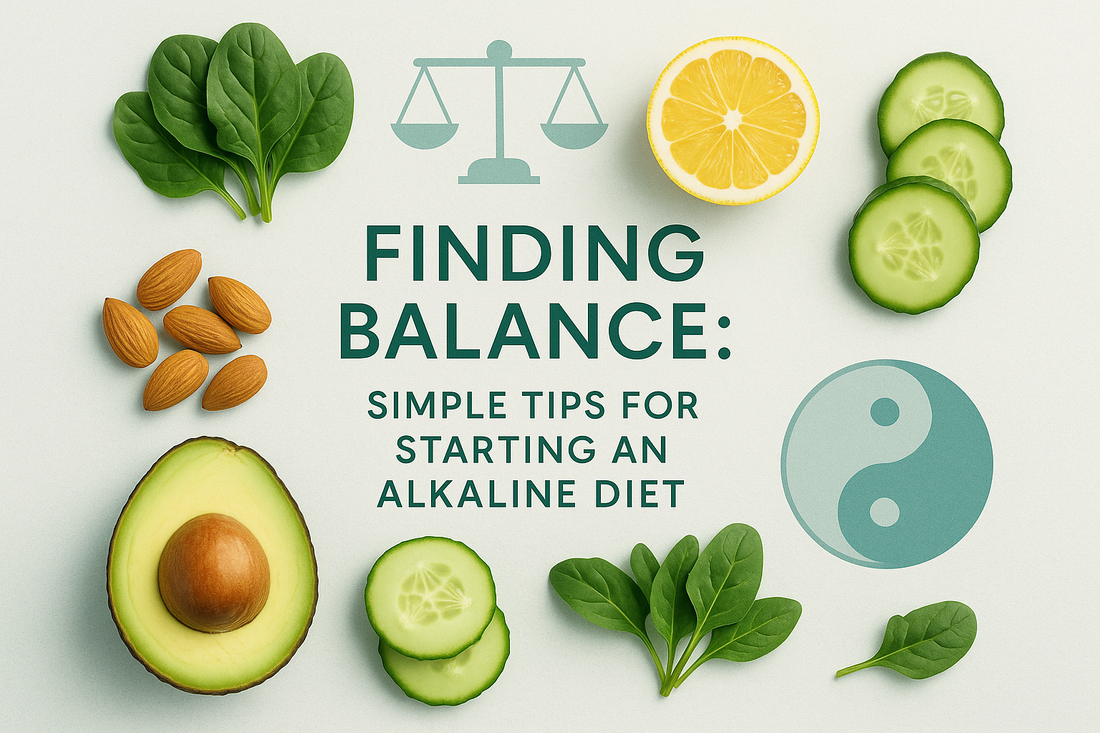
Finding Balance: Simple Tips for Starting an Alkaline Diet
Share
In the pursuit of optimal health, you may have encountered the concept of the alkaline diet. This eating plan is based on the idea that certain foods influence the pH level (acidity or alkalinity) of your body, and by prioritizing alkaline-forming foods, you can achieve better balance, increase energy, and support your overall well-being. Ready to make the shift? Here are simple, practical tips to help you successfully start and maintain an alkaline diet.

1. Understand the Basics: Acid vs. Alkaline
The core of this diet lies in shifting the ratio of foods on your plate. Foods are categorized by the ash residue they leave after digestion:
-
Alkaline-Forming Foods: These are the primary focus. They include most fresh fruits, vegetables, nuts, and legumes.
-
Acid-Forming Foods: These should be limited. They include meat, dairy, eggs, most grains (wheat, oats, rice), and processed foods.
-
Neutral Foods: Natural fats, starches, and sugars.
Tip: Aim for a balance of roughly 70-80% alkaline-forming foods and 20-30% acid-forming foods in your daily diet.

2. Hydrate with Alkaline Water and Lemon
The simplest and most immediate change you can make is to your water intake. Proper hydration is key to flushing out toxins.
-
Lemon Water: Start your day with a glass of warm water and fresh lemon. While lemons are acidic outside the body, they are incredibly alkaline-forming once metabolized. This is a perfect way to kickstart your system.
-
Herb-Infused Water: Infuse your drinking water with slices of cucumber, mint, or fresh lime to naturally boost its alkaline content and improve the taste.

3. Prioritize Leafy Greens at Every Meal
Leafy green vegetables are the superstars of the alkaline diet. They are nutrient-dense and highly effective at balancing your body's pH levels.
-
Make the Switch: Start replacing white, processed foods (like bread or pasta) with greens.
-
Creative Consumption: Add a handful of spinach to your morning smoothie, use large collard greens or lettuce leaves as wraps instead of tortillas, and ensure half of your plate at dinner is filled with dark green vegetables like kale or broccoli.

4. Swap Dairy and Meat for Plant-Based Proteins
Many traditional animal products are acid-forming. To maintain alkalinity, focus on plant-based alternatives for protein.
-
Milk Alternatives: Switch cow's milk for almond, soy, or coconut milk.
-
Protein Focus: Rely on legumes (like lentils, chickpeas, and beans), tofu, and nuts (almonds, walnuts) to meet your protein needs. These foods are alkaline-forming and rich in fiber.
5. Minimize Refined Sugar and Processed Foods
Refined sugars, processed snacks, and artificial ingredients are highly acid-forming and offer little nutritional value. Reducing these items is essential for success on the alkaline diet.
-
Read Labels: Look for hidden sugars and chemicals in packaged foods.
-
Replace Snacks: Swap packaged snacks for whole foods like raw vegetables (carrots, celery), almonds, or fresh fruit. This helps eliminate acidic foods while increasing alkaline intake.
Conclusion: Consistency, Not Perfection
Starting an alkaline diet is a journey toward eating more whole, natural foods. Don't worry about being perfect; focus on consistency. By implementing these simple tips—from hydrating with lemon water to increasing your leafy green intake—you can effortlessly transition to a more balanced, anti-inflammatory diet that leaves you feeling more energized and vibrant.